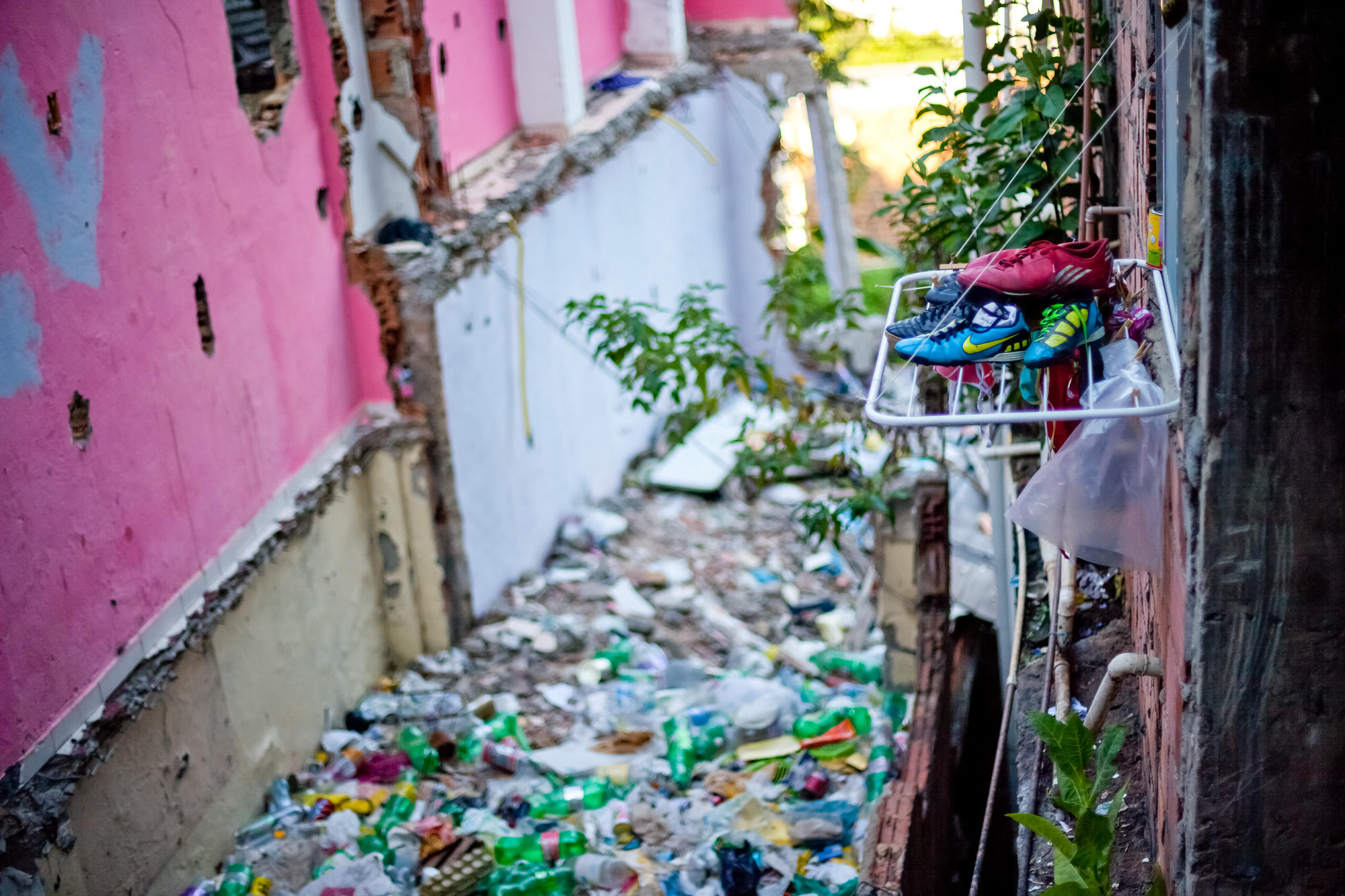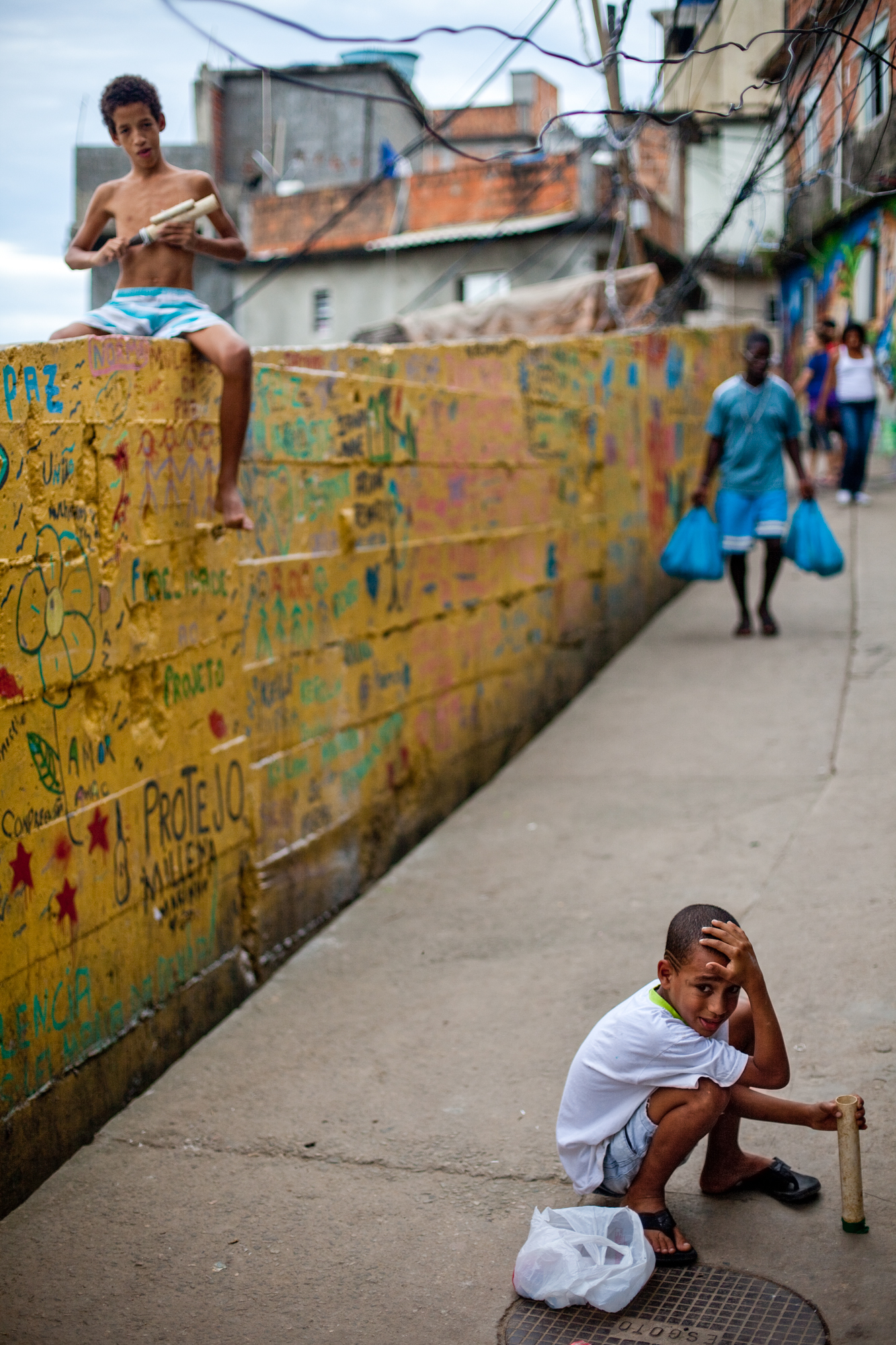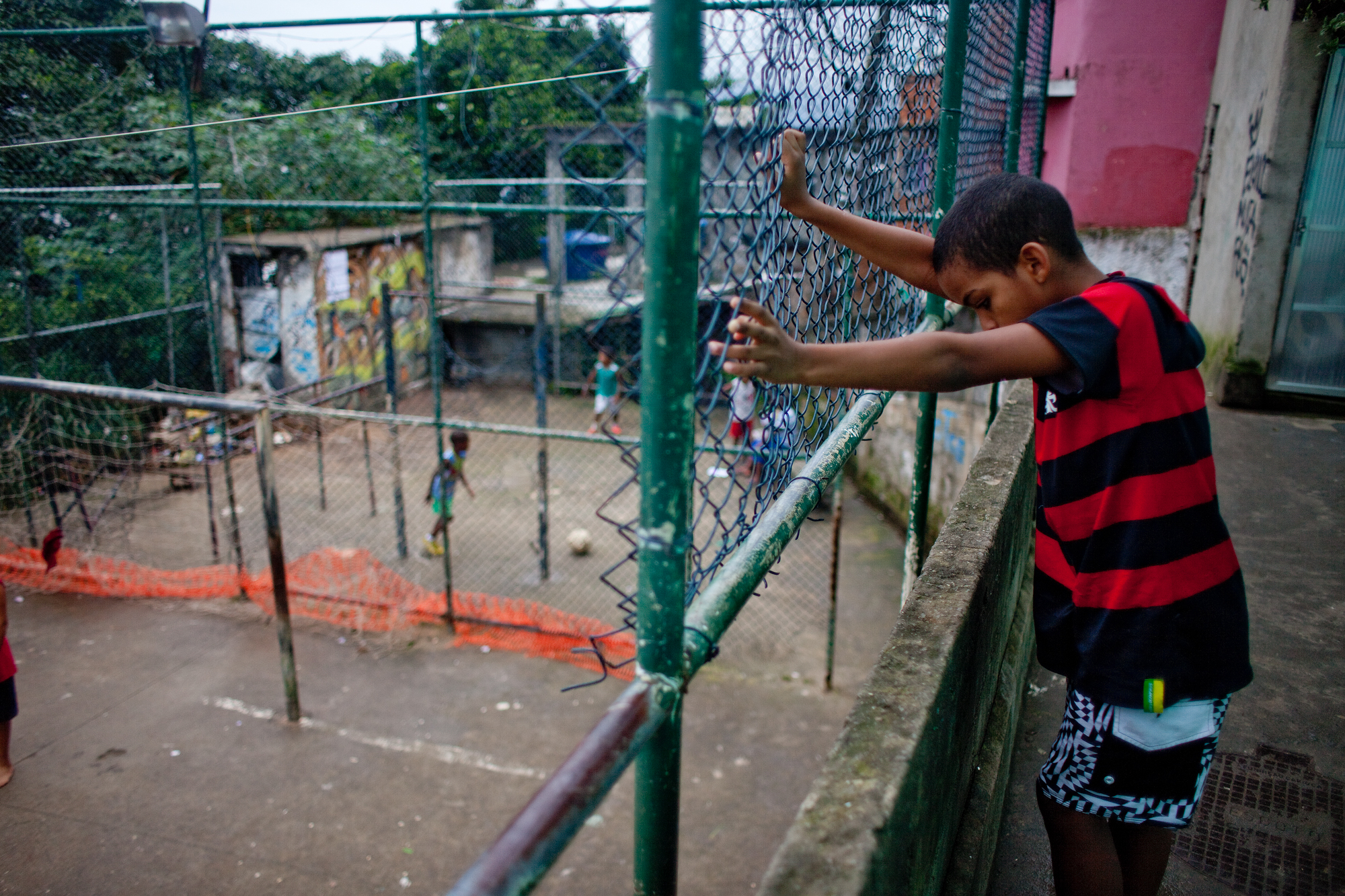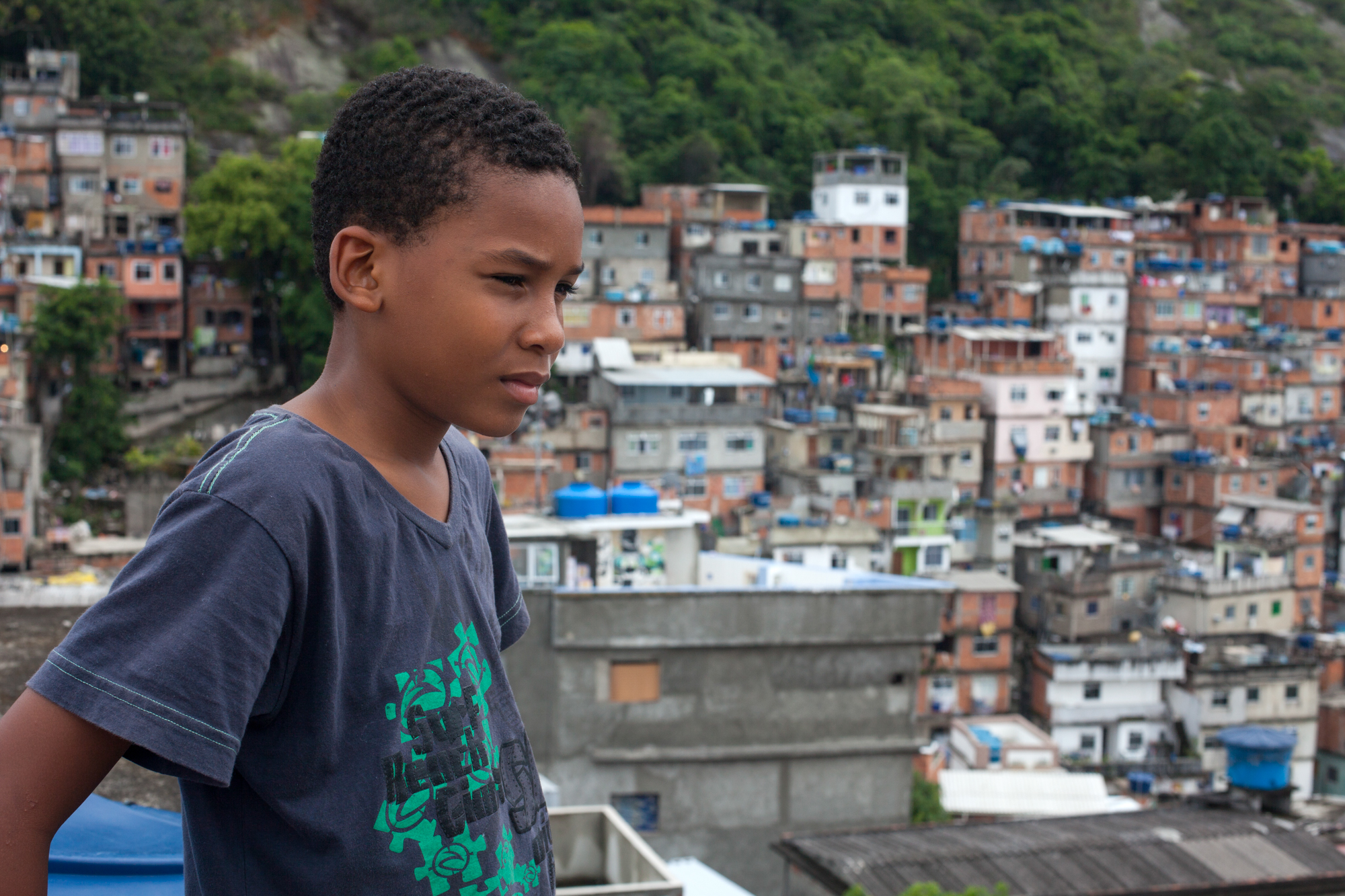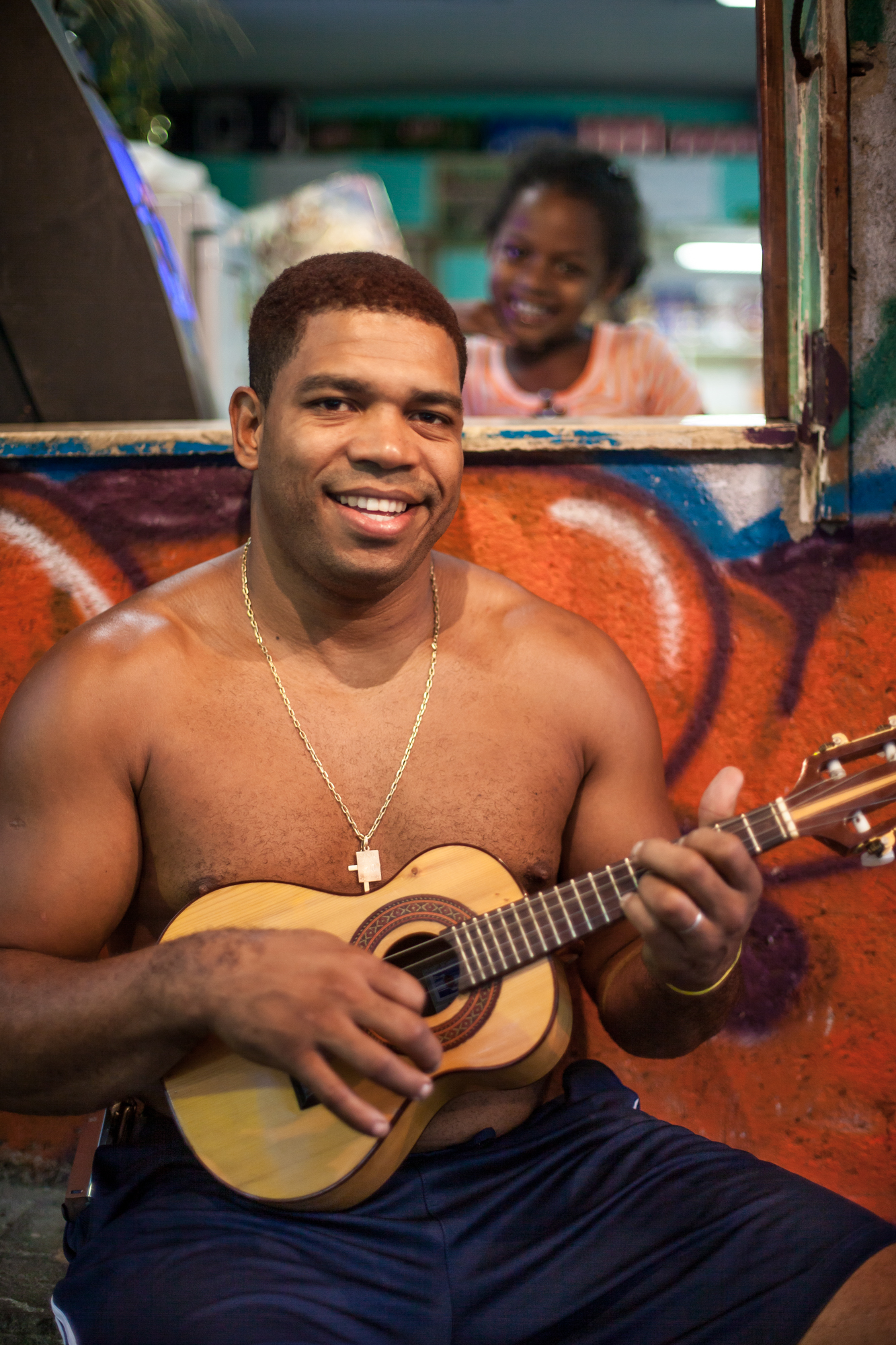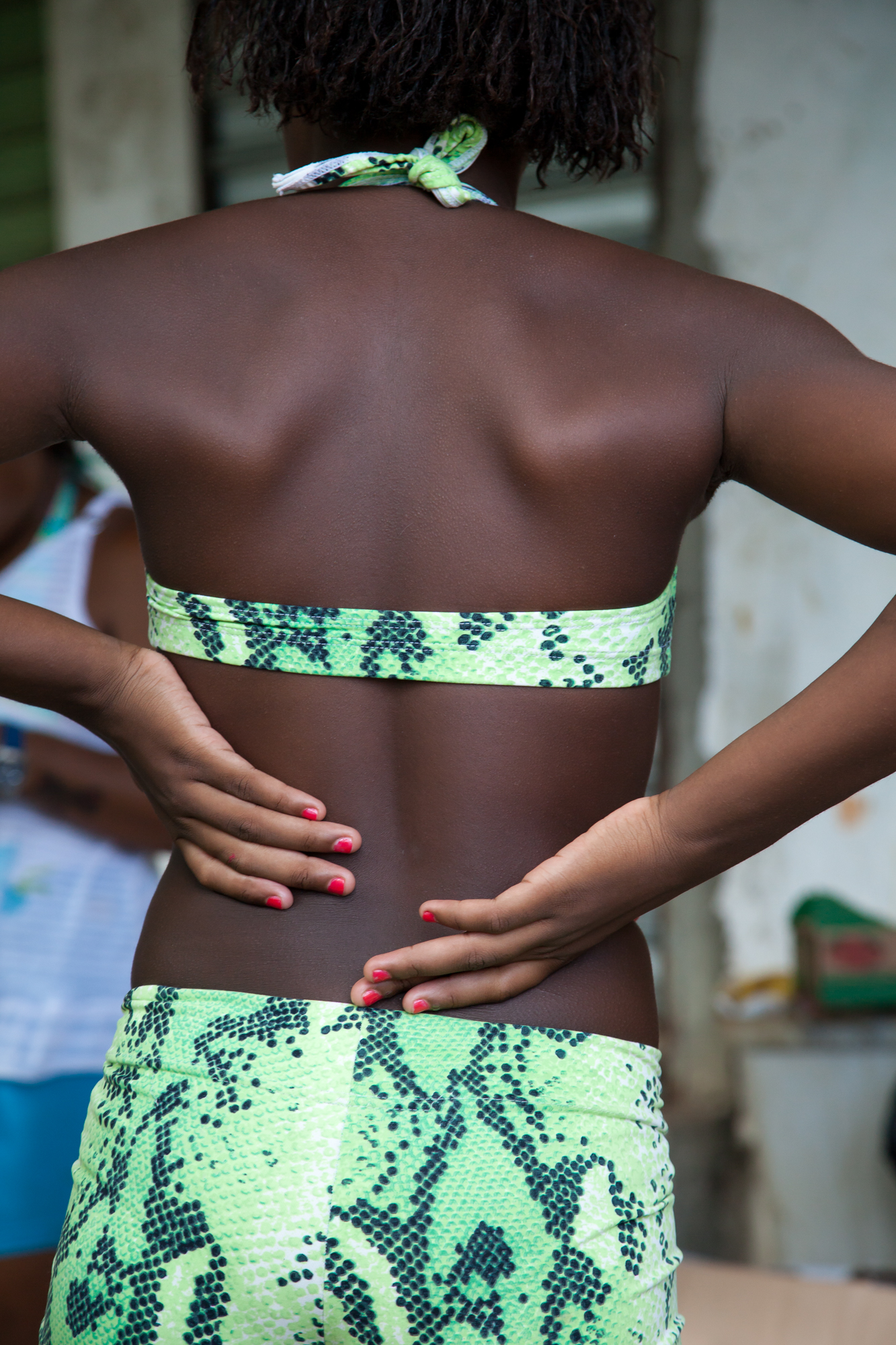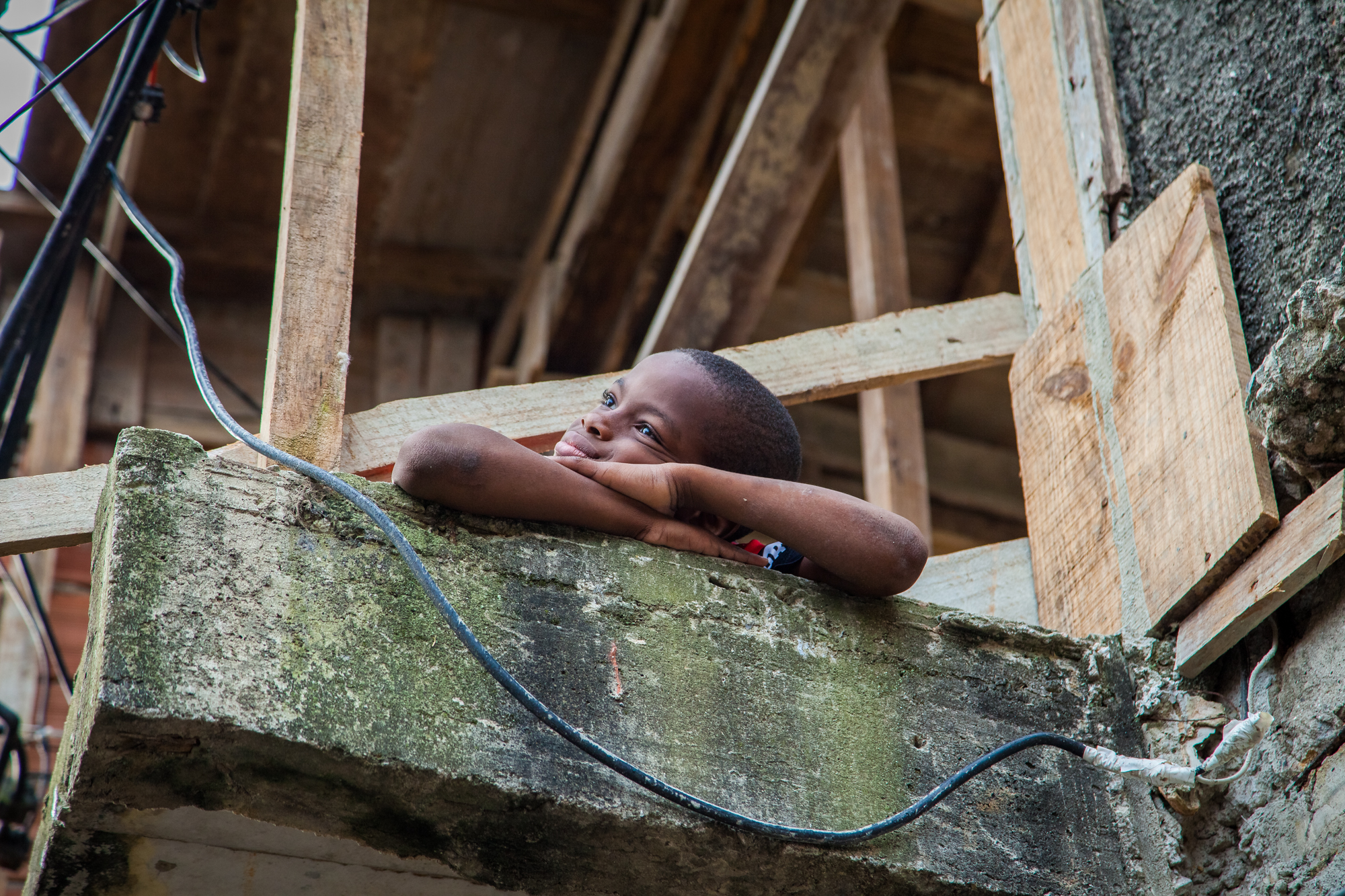The favela is CANTAGALO. It sits atop one of the "morros" behind Rio's Ipanema beach. You can reach it thanks to a new elevator designed Oscar Niemeyer. It flies up on a one stop journey 25 stories above the beach, but only manages to get to its bottom. That's a swift trip through time and money, from the most expensive square meter in all of Brazil to the land of endless stairs, precarious walls and open sewers.
"Cantagalo" means "the rooster that sings". Its larger neighbor, "Pavao" [peacock], acts as backdrop and watchtower. At the very top, where the last houses end, a small field opens amongst the dense Atlantic forest. From here you enjoy the best views of this maze, of these brick-colored puzzle pieces, the rhythmic intercalation of anarchy and harmony we call "favela". "Vietman" is how they call the field. This is where the drug lords killed and burned their enemies.
These you see here are the little queens and kings of the favela: they run, they laugh, they are rough, sassy, full of energy and ideas, beautiful. Not simply beautiful, gorgeous. They know all the steps and potholes, all the dead ends and shortcuts, where to get the cheapest açai or how to quickly get to the beach for a swim.
Life is hard, but they are not afraid; you can see it in their eyes. They are desperate for attention and want to have lots of fun. They are 3, 5, 6, 10, 16. They roller-skate on the dirt, hang like monkeys from the illegal power cables, eat all the candy they get, cuddle baby dolls on gravel sacks and dance carioca funk; they love to pose and to fool around.
And they fly kites, to see those bright colors, to look up high.
